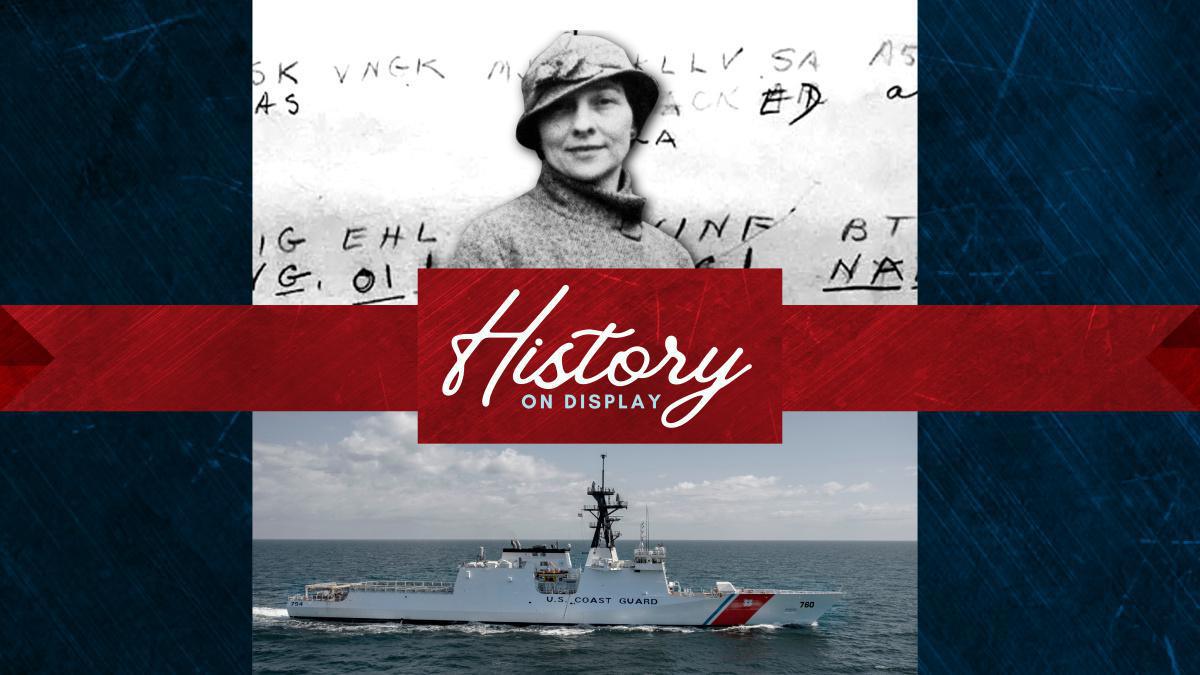The Coast Guard’s 11th Legend-class national security cutter is named to honor Elizebeth Smith Friedman, an American cryptanalyst. Born Aug. 26, 1892, Elizebeth was America's first great codebreaker. Over the course of her career, she worked for the U.S. Treasury, Coast Guard, Navy and Army, as well as the International Monetary Fund.
Elizebeth's career as a codebreaker began in 1916, when she was hired by a wealthy eccentric, George Fabyan, to help him uncover a cipher in the first folio of William Shakespeare’s plays.
Fabyan already had a number of cryptanalysts in his stable when the United States entered World War I, at a time when encrypted radio signals were transforming warfare. Fabyan volunteered the services of his staff to the U.S. Government, and he placed Elizebeth and her husband William in charge. It was the first professional coterie of codebreakers in the world.
After the war, the two moved to Washington, where they started to raise a family. Elizebeth thought her code-breaking days were over but, in 1925, the U.S. Coast Guard sought her help in tracking the rum runners that had proliferated during the Prohibition Era. Elizebeth personally deciphered thousands of encrypted messages, which led to the prosecution and conviction of many organized crime leaders, including Al Capone's brother.
Since there was too much traffic for Elizebeth to handle alone, the Coast Guard established a decryption unit with Elizebeth in charge. She would hold that position until the unit was transferred to the Navy at the advent of World War II.
During World War II, Elizebeth was given the task of deciphering radio traffic between German spies in South America and German U-boats in the Atlantic. The messages were giving U-boats the positions of American and British ships in the Atlantic, and the U-boats were wreaking havoc. At the time, the Enigma machine was being used by the Germans to decrypt ciphers. Elizabeth, however, was able to break the ciphers without even having seen an Enigma machine. She is now credited with saving the Atlantic for the allies and preventing a German front from developing in South America.
Elizebeth’s work resulted in hundreds of criminal prosecutions, saved thousands of lives and laid the groundwork for the science of cryptology and the establishment of the modern day National Security Agency.
Years after her death in 1980, Elizebeth’s important cryptanalytic work remained unknown to the public. It was only with the declassification of war documents in 2008 that word of her remarkable code-breaking skills were brought to light.
NSC 11 Friedman (WMSL 760) is the sister ship of Calhoun (WMSL 759), the 10th Legend-class national security cutter that was christened in June 2022.
At 418 feet long and with a crew of 120, NSCs are the most technologically-advanced ship in the Coast Guard’s fleet, enabling it to meet the high demands required for maritime and homeland security, law enforcement, marine safety, environmental protection and national defense missions.

